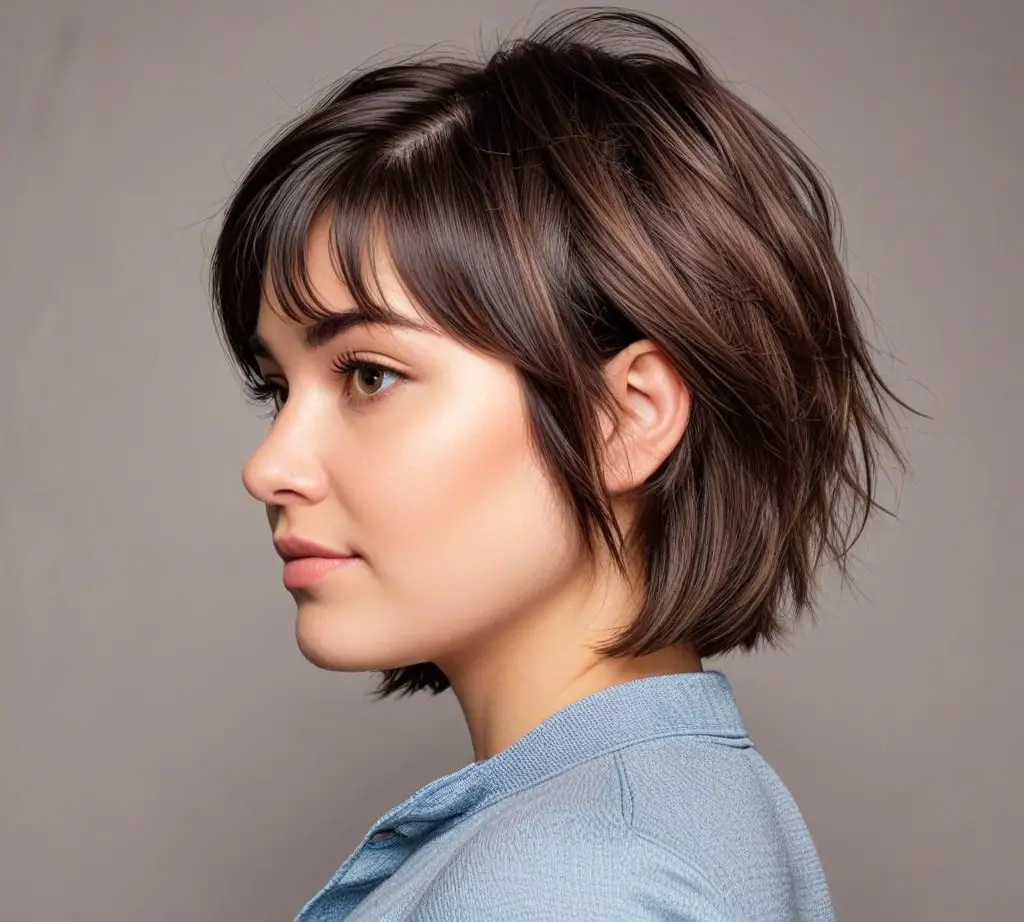Shag haircuts have become a popular choice for women looking to add style and dimension to their hair. This versatile cut features layers of varying lengths, creating a textured and effortlessly cool look. For ladies with round faces, shag haircuts offer a particularly flattering option that can help balance facial features and create the illusion of a more elongated shape.
The beauty of shag haircuts lies in their ability to enhance facial features while providing a low-maintenance style. By incorporating layers around the face and throughout the hair, shag cuts add volume at the crown and create movement that draws attention away from fuller cheeks. This clever technique can make round faces appear slimmer and more defined, boosting confidence and style in one chic package.
In the following sections, we’ll explore the characteristics of round faces and why shag haircuts work so well for this face shape. We’ll also discuss various shag styles that complement round faces, share styling tips, and provide important considerations before getting a shag haircut. Keep reading to discover how this trendy cut can transform your look and highlight your best features.
What makes a face shape round?
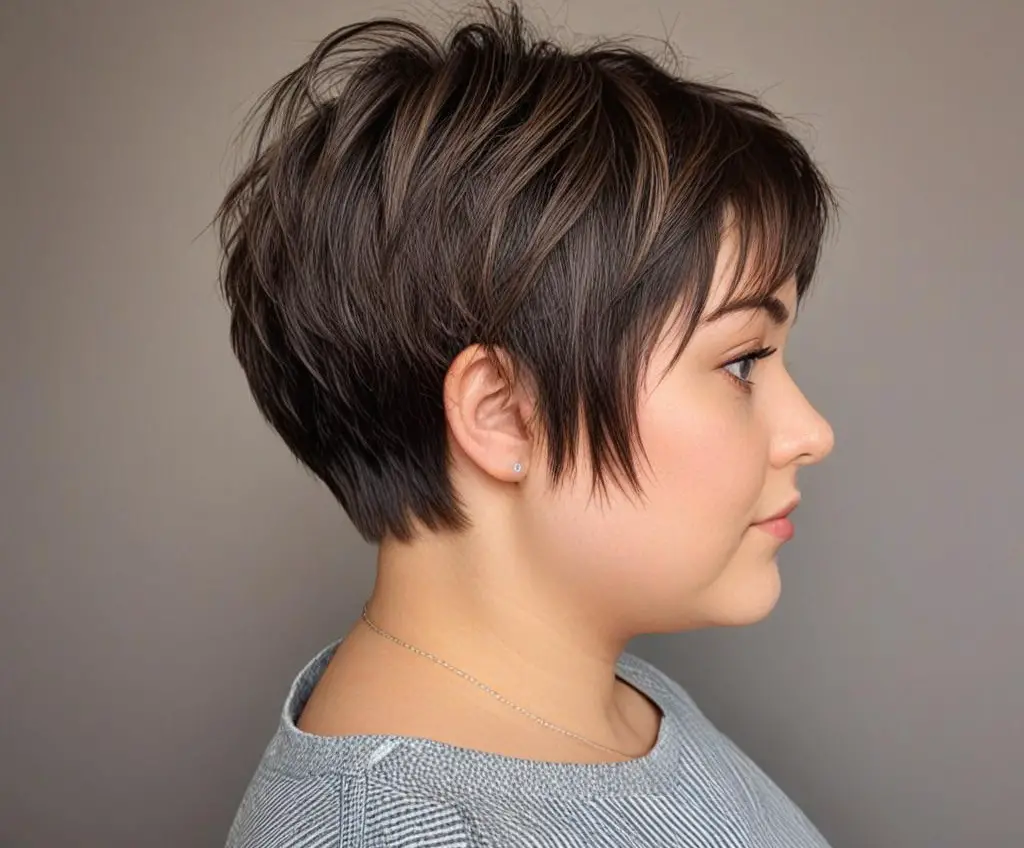
Round faces are often described as having soft, curved features with a width similar to their length. But what exactly makes a face shape round? Let’s explore the characteristics and features that define this facial structure.
Characteristics of a round face
Round faces typically have fuller cheeks and a rounded jawline. The width of the face is nearly equal to its length, creating a circular appearance. This face shape often gives a youthful and approachable look.
You might wonder, “How can I tell if my face is round?” Here’s a simple test: Look in the mirror and trace the outline of your face. If it forms a circle rather than an oval or heart shape, you likely have a round face.
Common features of round faces
Round faces share several common features:
- Soft, curved jawline
- Full cheeks
- Short or less defined chin
- Wide forehead
- Rounded hairline
These features combine to create the characteristic circular shape associated with round faces.
How to determine if you have a round face
Wondering if you have a round face? Try this quick measurement method:
- Measure the width of your face at its widest point (usually across the cheekbones).
- Measure the length of your face from your hairline to your chin.
- Compare the two measurements.
If the width and length are nearly the same, and your face lacks sharp angles, you likely have a round face shape.
Facial proportions of round faces
Facial proportions play a key role in determining face shape. Round faces typically have:
- A face width that’s about 90-100% of the face length
- Cheekbones that are the widest part of the face
- A forehead width similar to the jawline width
- A rounded chin without a sharp point
These proportions create a balanced, symmetrical appearance that’s characteristic of round faces.
Importance of choosing the right haircut for round faces
Selecting the right haircut for a round face can make a significant difference in your overall appearance. The goal is often to create the illusion of length and definition.
Why is this important? The right haircut can:
- Elongate your face
- Add definition to your features
- Balance your facial proportions
- Enhance your best features
- Boost your confidence
For round faces, hairstyles that add height at the crown, create vertical lines, or feature side-swept bangs can be particularly flattering. These styles help to visually lengthen the face and create a more oval appearance.
Understanding your face shape is the first step in finding a hairstyle that suits you perfectly. With this knowledge about round faces, you’re better equipped to choose a haircut that will highlight your best features and make you feel fantastic.
How do shag haircuts complement round faces?

Shag haircuts offer a fantastic solution for women with round faces looking to enhance their features. This versatile style can work wonders in creating a more balanced and flattering appearance. Let’s explore how shag cuts complement round faces and why they’re such a popular choice.
Creating the illusion of length
One of the primary benefits of a shag haircut for round faces is its ability to create the illusion of length. How does it achieve this? The answer lies in the layered structure of the cut. By incorporating longer layers that fall past the chin, a shag haircut draws the eye downward, visually elongating the face.
Think of it like this: imagine drawing vertical lines on a circle. Those lines make the circle appear more oval-shaped, right? That’s exactly what a shag cut does for your face.
Adding volume to the crown
Volume at the crown is a game-changer for round faces. Shag haircuts excel in this area, adding height and dimension to the top of your head. This vertical volume helps to counterbalance the width of a round face, creating a more oval appearance.
But how exactly does a shag cut add volume? Here’s the secret:
- Shorter layers on top
- Texturizing techniques
- Strategic cutting angles
- Lightweight, bouncy styling
These elements combine to lift your hair at the roots, giving you that coveted crown volume.
Framing the face with layers
Layers are the heart and soul of a shag haircut, and they play a crucial role in complementing round faces. Face-framing layers, in particular, can work wonders. These shorter pieces around your face create soft, diagonal lines that break up the circular shape of a round face.
Have you ever noticed how strategically placed picture frames can change the perception of a room? Face-framing layers work similarly, drawing attention to your best features and creating visual interest.
Balancing facial proportions
Shag haircuts are masters at balancing facial proportions. For round faces, the goal is often to create the illusion of a longer, more oval shape. The varied lengths in a shag cut achieve this by:
- Adding height at the crown
- Creating vertical lines with longer layers
- Minimizing width at the cheeks
- Emphasizing the jawline with tapered ends
This combination of elements works together to create a more balanced overall appearance.
Softening facial features
While some haircuts can accentuate the roundness of a face, shag cuts do the opposite. They soften facial features by introducing texture and movement. The tousled, effortless look of a shag cut adds a touch of softness that complements the natural curves of a round face.
Think about the difference between a smooth, polished ball and one with a textured surface. The textured one appears less perfectly round, right? That’s similar to how a shag cut works on round faces.
Shag haircuts offer a multitude of benefits for women with round faces. They create the illusion of length, add volume where it’s needed most, frame the face beautifully, balance proportions, and soften features. All these elements work together to enhance your natural beauty and give you a stylish, flattering look.
Remember, the key to a great shag cut is customization. A skilled stylist can tailor the cut to your specific face shape and features, ensuring you get the most flattering result possible. So why not give this versatile style a try? You might just discover your new favorite haircut.
Which shag styles work best for round faces?
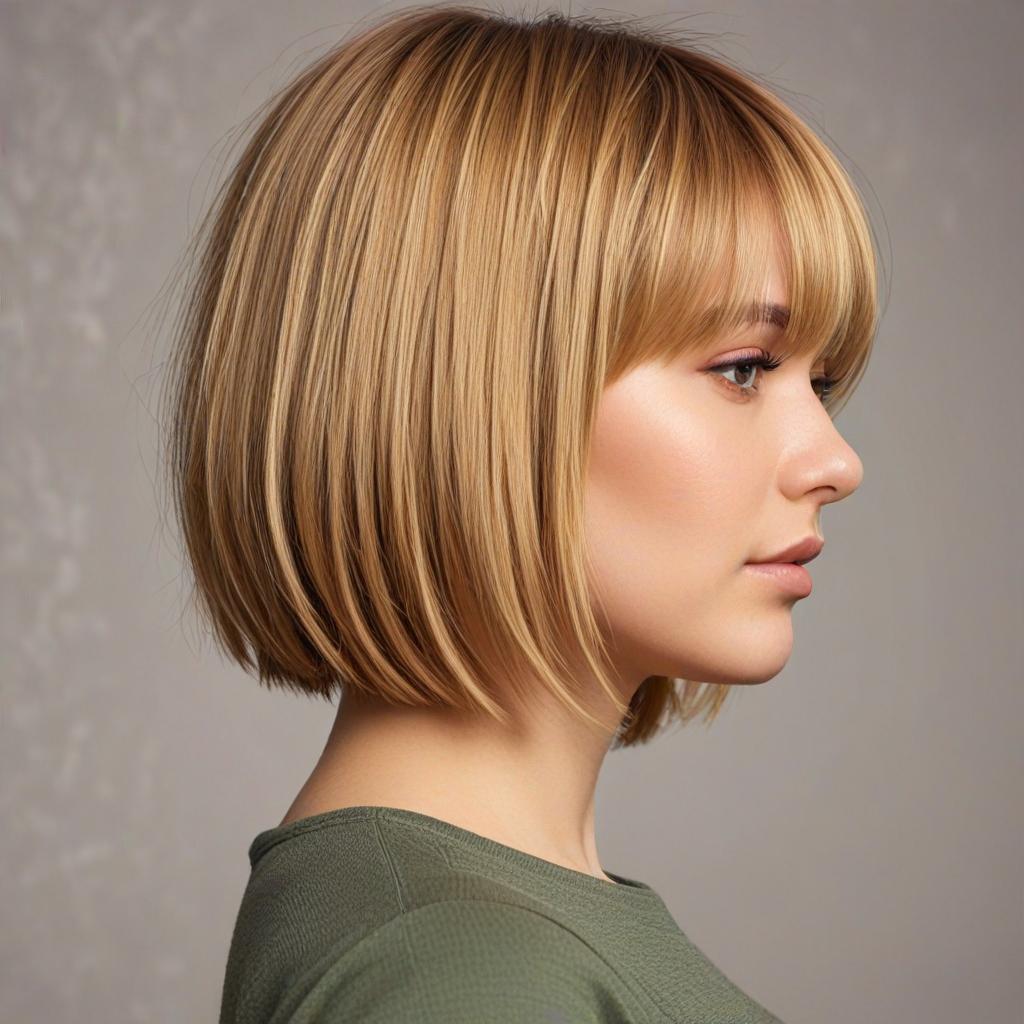
Shag haircuts offer a variety of options for women with round faces. These styles can help create the illusion of a longer, more oval-shaped face while adding texture and movement to your hair. Let’s explore some of the most flattering shag styles for round faces.
Long layered shags
Long layered shags are a fantastic choice for round faces. Why? The length helps elongate your face, while the layers add volume and movement. This combination creates a slimming effect that can balance out fuller cheeks.
To make the most of this style, ask your stylist for:
- Layers that start below the chin
- Face-framing pieces
- Textured ends
These elements work together to draw the eye downward, creating a lengthening effect.
Medium-length textured shags
Medium-length shags hit the sweet spot between long and short styles. They offer versatility and can be easily styled to suit different occasions. For round faces, a medium-length textured shag can add definition and create the appearance of a more angular face shape.
The key to this style is texture. Choppy layers and piece-y ends break up the roundness of your face, while the medium length maintains a feminine look. Consider adding some subtle highlights to enhance the texture and create depth in your hair.
Short choppy shags
Think short hair doesn’t work for round faces? Think again! A short choppy shag can be incredibly flattering if done right. The trick is to keep volume at the crown and create movement around the face.
A short shag with lots of layers and texture can:
- Add height to your hair
- Create the illusion of a longer face
- Minimize width at the cheeks
- Highlight your best features
For the best results, opt for a length that hits just above or at the chin. This helps to elongate your face while the choppy layers add definition.
Curtain bangs with shag cuts
Curtain bangs are a game-changer for round faces. When paired with a shag cut, they can completely transform your look. These bangs part in the middle and sweep to the sides, framing your face beautifully.
Why do curtain bangs work so well? They create vertical lines on either side of your face, which visually elongates your features. Plus, they draw attention to your eyes and cheekbones, taking the focus away from the fullness of a round face.
Side-swept shags
Side-swept styles are a classic choice for round faces, and they work wonderfully with shag cuts. A side-swept shag creates asymmetry, which helps to balance out the symmetry of a round face.
To achieve this look:
- Ask for longer layers on one side
- Style your hair with a deep side part
- Use texturizing products for added definition
The result? A chic, modern look that flatters your face shape and adds a touch of edginess to your style.
Choosing the right shag style for your round face is about finding a balance between length, layers, and texture. Whether you prefer long, flowing locks or a short, edgy cut, there’s a shag style that can work for you.
Remember, the most important factor in any haircut is how it makes you feel. Experiment with different shag styles to find the one that not only flatters your face shape but also fits your personality and lifestyle. With the right cut, you’ll feel confident and look fantastic every day.
How to style a shag haircut for a round face?
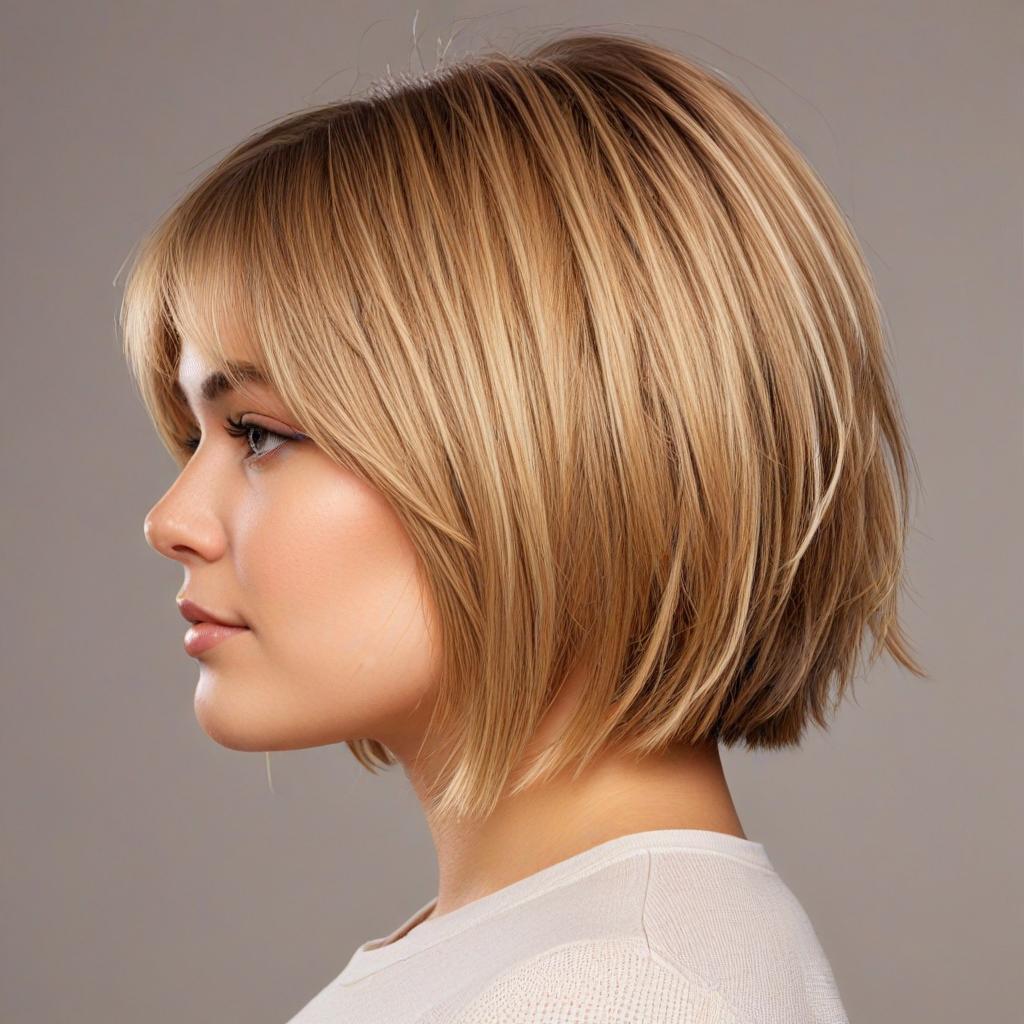
Styling a shag haircut for a round face can be a fun and creative process. With the right techniques and products, you can enhance your features and create a flattering look that suits your face shape. Let’s explore some effective styling methods and tips to make the most of your shag cut.
Products to enhance texture
Texture is key in a shag haircut, especially for round faces. The right products can help you achieve that perfectly tousled, effortless look. But which products work best?
Start with a volumizing mousse or spray. Apply it to damp hair, focusing on the roots. This will give your hair lift and body, creating the illusion of a longer face. Next, consider using a texturizing spray or sea salt spray. These products add grit and separation to your layers, enhancing the overall texture of your shag cut.
For those with fine hair, a dry shampoo can be a game-changer. It absorbs excess oil and adds volume, keeping your shag looking fresh and full throughout the day.
Techniques for adding volume
Volume is crucial when styling a shag cut for a round face. It helps to elongate your face and balance out fuller cheeks. Here are some techniques to add volume to your shag:
- Use a round brush while blow-drying
- Try the “cool shot” button on your dryer for extra lift
- Flip your head upside down while drying for maximum volume
- Tease the crown area gently for added height
Remember, the goal is to create height at the crown and fullness around the sides of your face. This vertical volume helps to slim and elongate your face shape.
Ways to create movement
Movement in your hair can help to soften the roundness of your face. How can you create this movement in your shag cut? One effective method is to use a large-barrel curling iron or wand. Wrap sections of hair loosely around the barrel, alternating directions for a natural look.
Another technique is the “twist and pin” method. While your hair is damp, twist sections and pin them to your head. Once dry, unpin and run your fingers through your hair for effortless waves.
For a quick and easy option, try braiding your hair before bed. In the morning, undo the braids and shake out your hair for soft, beachy waves that complement your shag cut.
Tips for maintaining the shape
Maintaining the shape of your shag cut is essential to keep it flattering for your round face. Regular trims every 6-8 weeks can help maintain the layered structure of your cut. Between salon visits, use point-cutting techniques with hair-cutting scissors to trim any split ends and maintain the textured look.
When washing your hair, be gentle. Avoid rubbing your hair vigorously with a towel, as this can cause frizz and disrupt the shape of your layers. Instead, gently squeeze out excess water and let your hair air dry when possible.
Styling tools for shag haircuts
The right tools can make a big difference in styling your shag cut. A good quality blow dryer with a concentrator nozzle is essential for directing airflow and creating smooth, sleek styles when needed.
Invest in a set of round brushes in different sizes. Smaller brushes are great for creating volume at the roots, while larger ones can help you achieve loose waves.
For those days when you want a more polished look, a flat iron can help smooth out your layers while still maintaining some texture. Look for one with adjustable heat settings to protect your hair from damage.
Lastly, don’t underestimate the power of a good comb. A wide-tooth comb can help detangle your hair without disrupting your layers, while a fine-tooth comb is perfect for teasing and creating volume at the crown.
By combining these products, techniques, and tools, you can style your shag haircut in a way that flatters your round face. Experiment with different methods to find what works best for your hair type and personal style. With a little practice, you’ll master the art of styling your shag cut, creating a look that’s both chic and flattering for your face shape.
What should you consider before getting a shag haircut?
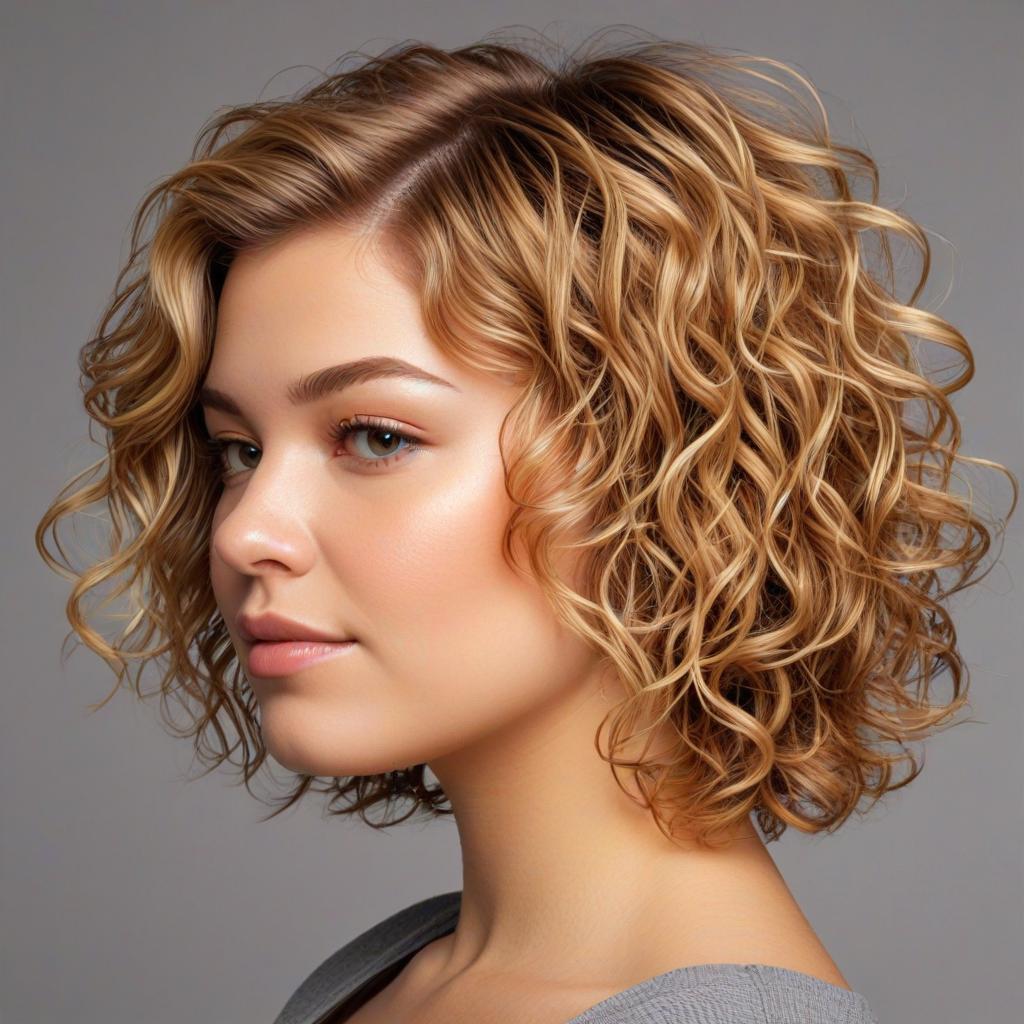
Deciding to get a shag haircut can be an exciting step towards a fresh, new look. However, before you take the plunge, there are several factors to consider. These considerations will help you determine if this style is right for you and how to make it work best for your unique features.
Hair texture and thickness
Your hair’s natural texture and thickness play a crucial role in how a shag haircut will look on you. Fine hair might require more layering to create volume, while thick hair may need thinning to avoid a bulky appearance. Curly hair can look fantastic in a shag cut, but it might require different styling techniques compared to straight hair.
Ask yourself:
- Is my hair naturally straight, wavy, or curly?
- How thick or thin is my hair?
- Does my hair hold styles well?
The answers to these questions will guide you and your stylist in creating the perfect shag cut for your hair type.
Maintenance requirements
A shag haircut can be relatively low-maintenance, but it still requires some upkeep to look its best. Consider your daily routine and how much time you’re willing to spend on your hair each day. Some women love the “bedhead” look that a shag cut can provide, while others prefer a more polished appearance.
Think about these maintenance aspects:
- How often are you willing to wash and style your hair?
- Do you enjoy using styling products?
- Are you comfortable with regular trims to maintain the shape?
- How much time can you dedicate to styling each morning?
Face-framing techniques
One of the strengths of a shag haircut is its ability to frame your face beautifully. However, the face-framing layers need to be customized to your specific face shape and features. For round faces, longer layers that start below the chin can help elongate your face. If you have a square jaw, softer, more feathered layers around the face can soften your angles.
Your stylist should consider:
- The length of your face
- The width of your forehead and jawline
- Your cheekbone structure
- Any features you want to highlight or downplay
Consultation with a stylist
A thorough consultation with your stylist is crucial before getting a shag haircut. This is your opportunity to discuss your hair goals, concerns, and lifestyle. Bring pictures of shag cuts you like, but be open to your stylist’s suggestions based on their professional experience.
During your consultation, discuss:
- Your hair care routine
- Any past hair issues or treatments
- Your willingness to use styling products
- How often you’re able to come in for trims
A good stylist will listen to your needs and provide honest feedback about what will work best for you.
Customizing the cut to your features
The beauty of a shag haircut lies in its versatility. It can be customized to suit your individual features and personal style. Do you prefer a more dramatic look with lots of layers, or a subtler version with just a few face-framing pieces? Would you like to incorporate bangs into your shag cut?
Consider these elements when customizing your cut:
- The overall length you want to maintain
- How much layering you’re comfortable with
- Whether you want bangs, and if so, what style
- Any specific areas you want to highlight or camouflage
By thinking through these aspects, you’ll be better prepared to communicate your desires to your stylist and achieve a shag haircut that truly suits you.
Remember, a shag haircut can be a fantastic choice for many women, but it’s important to consider these factors to ensure you’ll be happy with the result. Take your time, do your research, and have an open and honest conversation with your stylist. With the right preparation, you’ll be well on your way to rocking a stunning shag cut that complements your features and fits your lifestyle.
Shag Haircuts: Your Path to Effortless Style
Shag haircuts offer a versatile and flattering option for women with round faces. By incorporating layers, texture, and movement, this style can help elongate your face shape and highlight your best features. From long layered shags to short choppy cuts, there’s a variation to suit every preference and hair type.
As you consider taking the plunge into the world of shag haircuts, remember to take into account your hair’s natural texture, your styling preferences, and your lifestyle. A thoughtful consultation with your stylist will help you customize the cut to your unique features and needs. With the right approach and styling techniques, a shag haircut can become your signature look, boosting your confidence and showcasing your personal style effortlessly.
Frequently Asked Questions
Q: What is a shag haircut?
A: A shag haircut is a layered cut that creates texture and movement in the hair, typically featuring shorter layers on top and longer layers at the bottom.
Q: Why are shag haircuts good for round faces?
A: Shag haircuts can help elongate round faces by adding volume at the crown and creating vertical lines with layers, which balance out fuller cheeks.
Q: How do I know if I have a round face?
A: If your face width is nearly equal to its length and you have soft, curved features without sharp angles, you likely have a round face.
Q: What products should I use to style a shag haircut?
A: Key products for styling a shag haircut include volumizing mousse, texturizing spray, and dry shampoo to enhance texture and volume.
Q: How often should I trim my shag haircut?
A: To maintain the shape of your shag haircut, it’s recommended to get a trim every 6-8 weeks.
Q: Can I get a shag haircut if I have curly hair?
A: Yes, shag haircuts can work well with curly hair, but they may require different styling techniques compared to straight hair.
Q: What should I discuss with my stylist before getting a shag haircut?
A: Discuss your hair texture, desired maintenance level, face shape, and any specific features you want to highlight or downplay.
Q: Are shag haircuts high-maintenance?
A: Shag haircuts can be relatively low-maintenance, but they do require some styling and regular trims to maintain their shape and texture.

